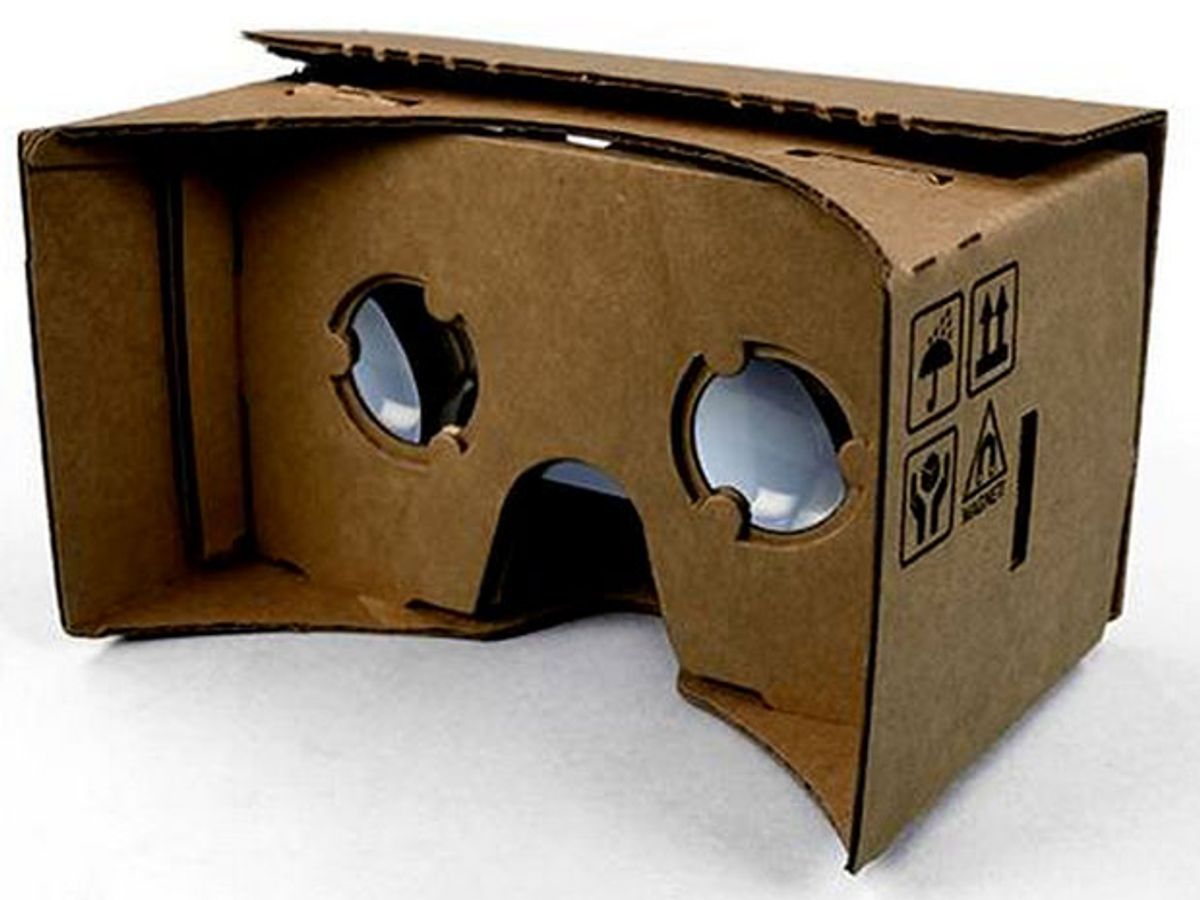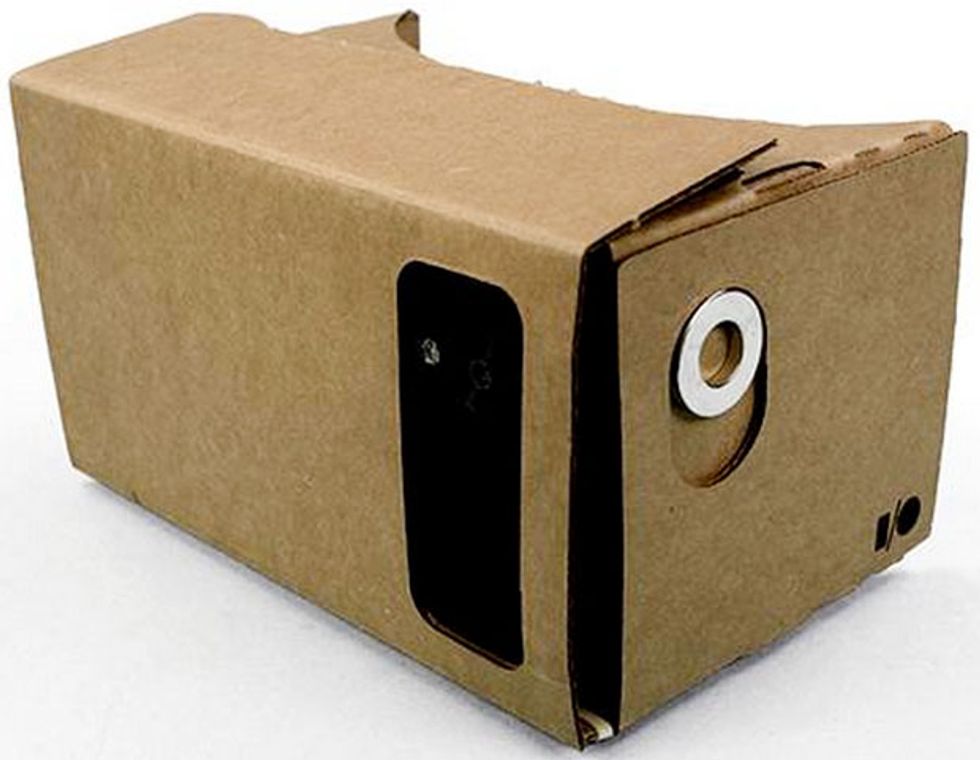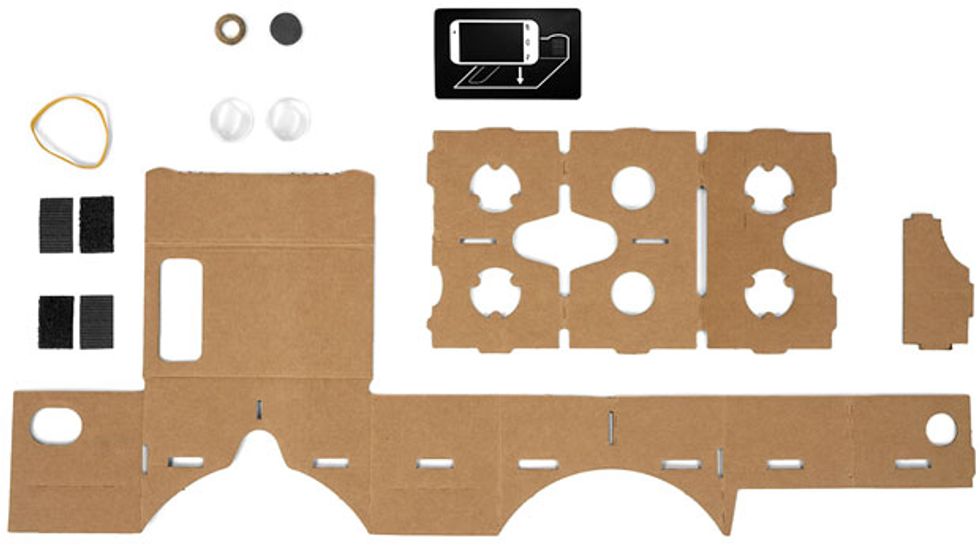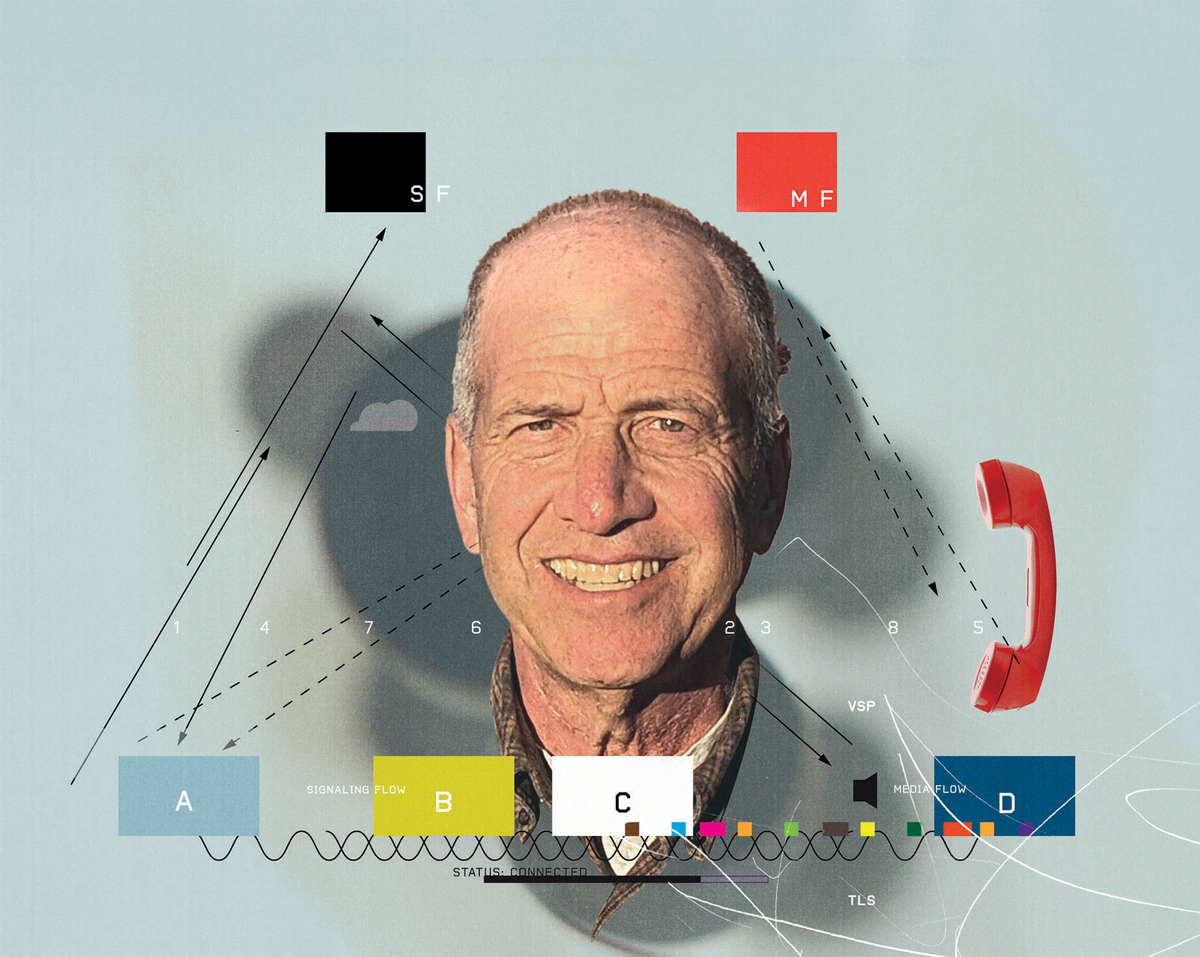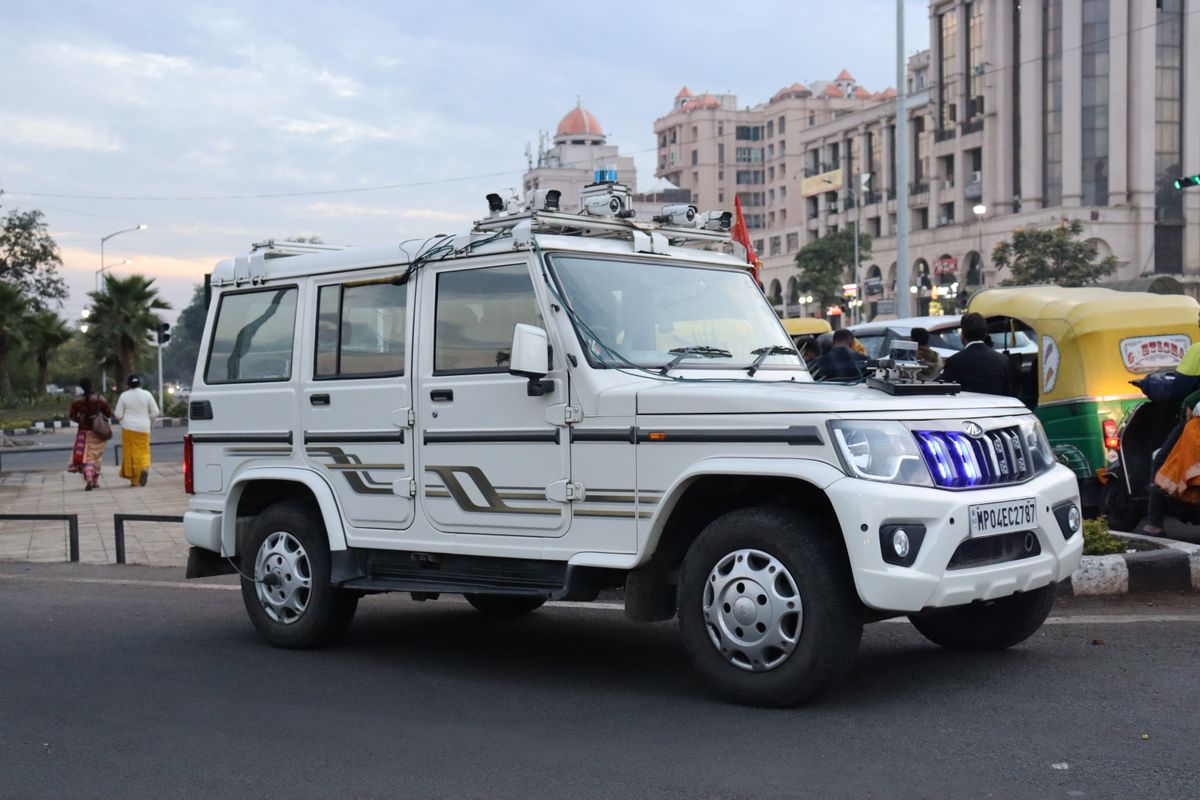What do you need for a virtual reality experience? You need one image going into one eye and a different image going into the other – it’d be good if the images changed once in a while – and that’s basically it. Google Cardboard brings that to you with only a smartphone, a couple of lenses, and cardboard (and some magnets and rubber bands).
Wednesday at their I/O conference in San Francisco Google handed out unfoldable packages that assembled – via Velcro and some tearing on the dotted line – into fully functional 3-D displays upon adding an Android phone and a Cardboard-compatible app.
Google also put do-it-yourself instructions with equally simple materials online for those who missed the conference.
The trickiest part to find are the lenses: Google’s recommendation is now unavailable on Amazon, and users on Cardboard’s quickly-expanding Google+ group have recommend substituting everything from disassembled reading glasses to extra Oculus Rift lenses. In addition to following the cardboard-based instructions, some adventurous group members report assembling headsets via laser-cut fiber board and 3-D printing, not to mention retro stereoscopes, magnifying glasses, and toys intended for still images. Nobody’s yet followed Google’s own suggestion for the frame: an extra-large pizza box.
Besides the built-in demo, developers have been creating their own free and paid apps—including a Minecraft-like game and a roller coaster simulation—with the help of the VR Toolkit. The toolkit is intended to help with perspective changes, head tracking, and movement in order to optimize apps for 3-D.
Cardboard is clearly not intended as an immersive virtual reality experience on par with the Rift or Sony’s Morpheus, and there's the possibility of blurriness,discomfort, and the inherent motion lag when using today's smartphones. But as a barebones 3-D platform, it's hard to resist. And if the next big app appears on Android for 3-D, you can bet Google will have a higher-quality successor to Cardboard out in a hurry.
